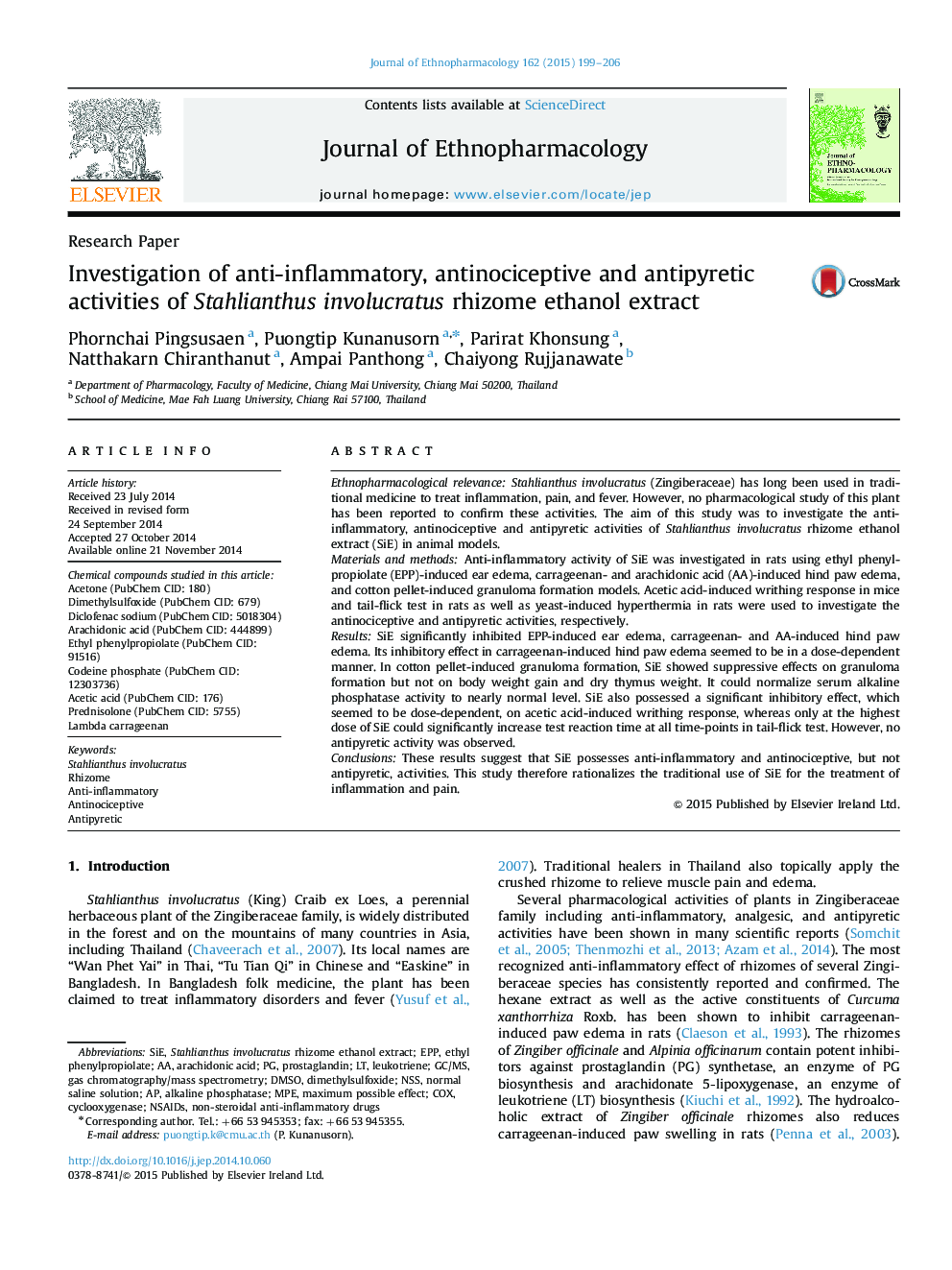| کد مقاله | کد نشریه | سال انتشار | مقاله انگلیسی | نسخه تمام متن |
|---|---|---|---|---|
| 5835444 | 1560400 | 2015 | 8 صفحه PDF | دانلود رایگان |
Ethnopharmacological relevanceStahlianthus involucratus (Zingiberaceae) has long been used in traditional medicine to treat inflammation, pain, and fever. However, no pharmacological study of this plant has been reported to confirm these activities. The aim of this study was to investigate the anti-inflammatory, antinociceptive and antipyretic activities of Stahlianthus involucratus rhizome ethanol extract (SiE) in animal models.Materials and methodsAnti-inflammatory activity of SiE was investigated in rats using ethyl phenylpropiolate (EPP)-induced ear edema, carrageenan- and arachidonic acid (AA)-induced hind paw edema, and cotton pellet-induced granuloma formation models. Acetic acid-induced writhing response in mice and tail-flick test in rats as well as yeast-induced hyperthermia in rats were used to investigate the antinociceptive and antipyretic activities, respectively.ResultsSiE significantly inhibited EPP-induced ear edema, carrageenan- and AA-induced hind paw edema. Its inhibitory effect in carrageenan-induced hind paw edema seemed to be in a dose-dependent manner. In cotton pellet-induced granuloma formation, SiE showed suppressive effects on granuloma formation but not on body weight gain and dry thymus weight. It could normalize serum alkaline phosphatase activity to nearly normal level. SiE also possessed a significant inhibitory effect, which seemed to be dose-dependent, on acetic acid-induced writhing response, whereas only at the highest dose of SiE could significantly increase test reaction time at all time-points in tail-flick test. However, no antipyretic activity was observed.ConclusionsThese results suggest that SiE possesses anti-inflammatory and antinociceptive, but not antipyretic, activities. This study therefore rationalizes the traditional use of SiE for the treatment of inflammation and pain.
235
Journal: Journal of Ethnopharmacology - Volume 162, 13 March 2015, Pages 199-206
